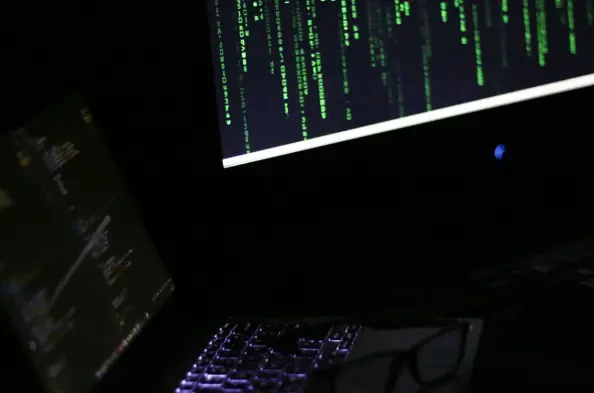In an era where quantum computing looms as a formidable force set to revolutionize industries, the urgency for organizations to transition to post-quantum cryptography (PQC) has never been more palpable. Cryptographically relevant quantum computers (CRQCs) are anticipated to threaten the foundational security models currently protecting sensitive data, financial transactions, and global communications. Experts emphasize the need for immediate action. The potential risks posed by these advancements highlight the importance of robust security infrastructures to safeguard against future threats.
The Vital Role of Communication and Collaboration
Urging Vendor and Corporate Coordination
Navigating this complex landscape necessitates comprehensive dialogues between companies and their vendors, ensuring preparedness for PQC. Dan Cuthbert from Santander advises Chief Information Security Officers (CISOs) to demand detailed PQC strategies from vendors, urging the provision of cryptography bills of materials (CBOMs) akin to software BOMs. This transparency is crucial for identifying vulnerabilities and fortifying defenses. Karl Holmqvist, CEO of Lastwall, echoes this sentiment, stressing the need for meticulous examination of cryptographic methods within organizations. Such scrutiny aids in identifying weaknesses and understanding the intricacies of cryptographic integrity, enabling the deployment of appropriate controls for safeguarding assets.
Incorporating collaboration within supply chains offers another layer of protection. Anne Leslie from IBM underscores the shifting dynamics where traditional competitors share knowledge to enhance collective readiness against quantum threats. This alliance not only fosters innovation but also expedites the proactive measures required to bolster security mechanisms. Collaborative endeavors thus play a pivotal role in fortifying defenses, emphasizing the collective effort needed to address the quantum challenge effectively.
Regulatory Frameworks as Catalysts
The adoption of regulatory frameworks like NIS2 and DORA emerges as a critical component in driving the transition to PQC. These frameworks encourage organizations to continuously improve cryptographic practices, ensuring that systems are equipped to handle emerging threats. NIS2 and DORA provide structured guidelines that compel companies to audit and enhance cryptographic measures, keeping pace with technological advancements. Regulatory pressure serves as a catalyst, motivating organizations to refine their security protocols and maintain vigilance in the face of evolving risks.
The proactive identification of critical information assets vulnerable to future quantum advancements becomes an essential strategy. By conducting thorough audits of cryptographic use, companies can initiate necessary adjustments to secure data integrity. Regulatory bodies thus serve as both guides and watchdogs, steering organizations toward the timely implementation of PQC while demanding accountability and progress.
Strategies for Mitigating Quantum Risks
Developing Coordinated Defense Mechanisms
To mitigate the looming threats posed by quantum computing, industries must engage in coordinated efforts. Panel discussions highlight the importance of forming clear strategies and ensuring vendor accountability, leveraging regulatory expectations to establish robust cryptographic defenses. Organizations are encouraged to foster internal and external collaboration for unified action plans. Shared knowledge and resources facilitate comprehensive approaches to enhance resilience against potential breaches.
Particularly significant is the focus on individual measures tailored to specific industry needs. Deploying customized cryptographic solutions, considering diverse operational requirements, can enhance security frameworks. Implementing tiered defenses, robust monitoring, and adaptive security protocols are essential components of a multifaceted strategy that anticipates and neutralizes risks efficiently. Embracing innovative solutions and investing in cybersecurity research further empower organizations to stay ahead in the quantum race.
Leveraging Technological Innovations
Advancements in technology serve as powerful allies in preparing for quantum threats. Incorporating cutting-edge cryptographic techniques such as lattice-based cryptography and hash-based signatures reinforces existing defenses, ensuring durability against advanced computational power. Continuous investment in emerging technologies enriches security landscapes, equipping systems to fend off future breaches effectively. Exploring innovative solutions implies seeking potential breakthroughs in cryptographic research, identifying disruptive technologies that promise enhanced protection.
Active engagement with cybersecurity communities fosters awareness and encourages practical exchanges of ideas to refine cryptographic protocols. Realigning strategies with technological developments ensures anticipation and swift adaptation to quantum evolutions. Encouragement of ongoing research and development informs the creation of solutions optimized for the complexity of quantum threats. The commitment to innovation stands at the forefront of defense, empowering organizations with the tools necessary to combat future challenges.
Reimagining Cryptographic Future
In an era where quantum computing stands poised to dramatically transform various industries, the urgency for organizations to shift toward post-quantum cryptography (PQC) is increasingly pressing. Quantum computers with cryptographic capabilities, known as cryptographically relevant quantum computers (CRQCs), are expected to pose a serious threat to the current security models that protect sensitive data, financial transactions, and the integrity of global communications systems. Experts argue that immediate action is crucial, emphasizing the need for organizations to proactively overhaul their security frameworks. Robust security systems must be established to withstand the anticipated risks posed by these quantum advancements. The potential vulnerabilities highlight the importance of creating and maintaining sophisticated protection measures to guard against the emerging threats that could compromise the confidentiality, integrity, and availability of essential information in this new quantum age.






